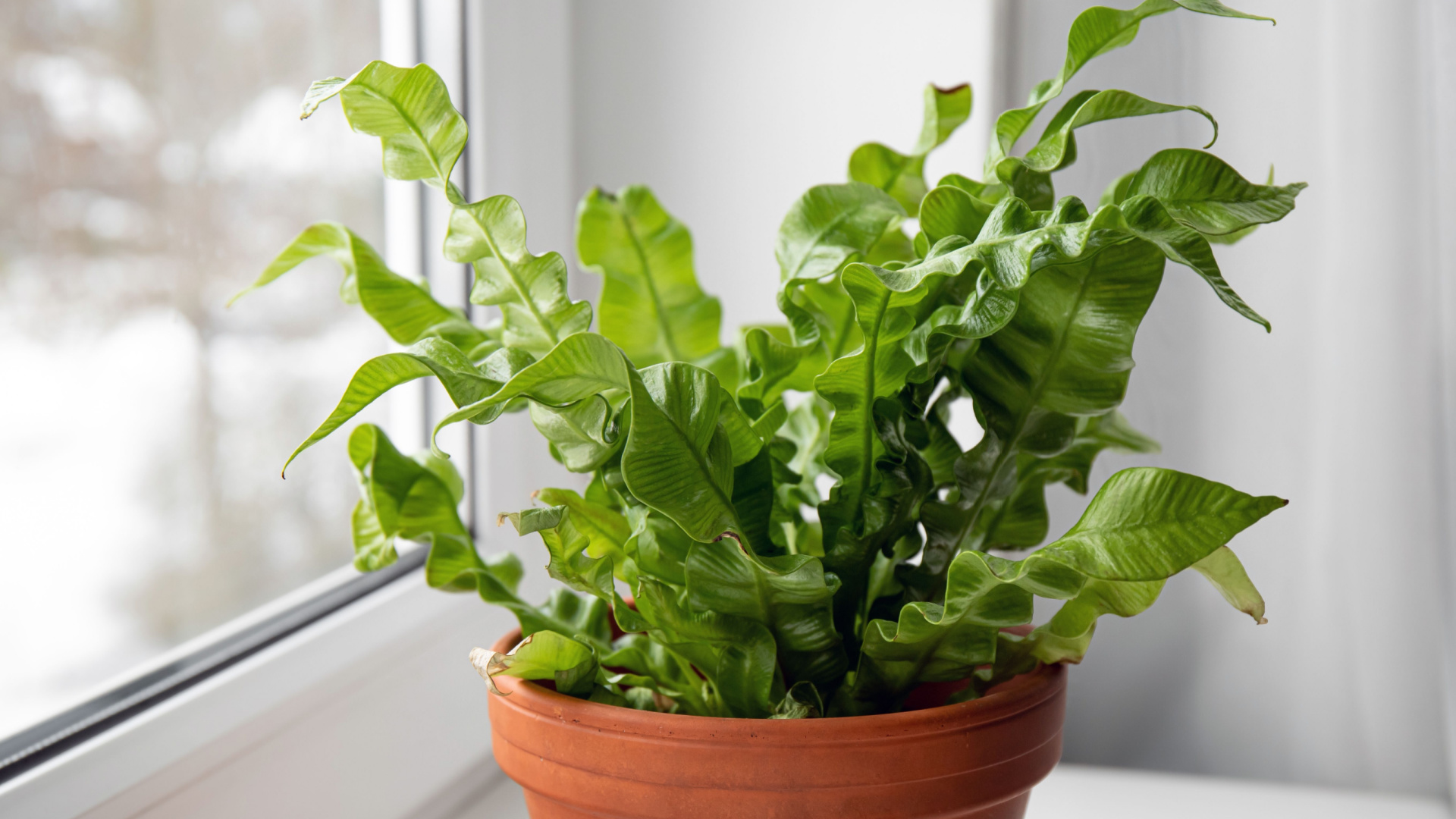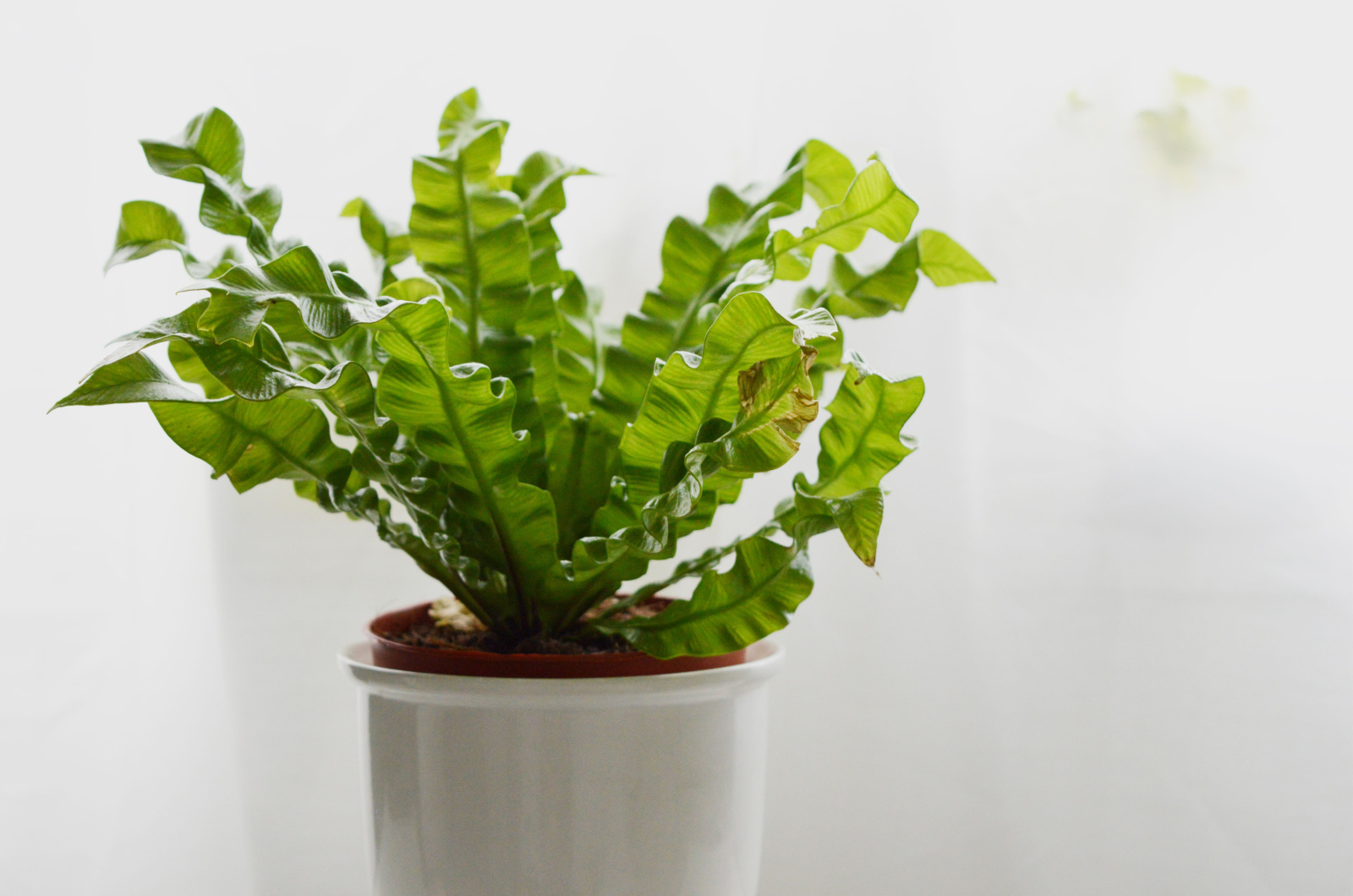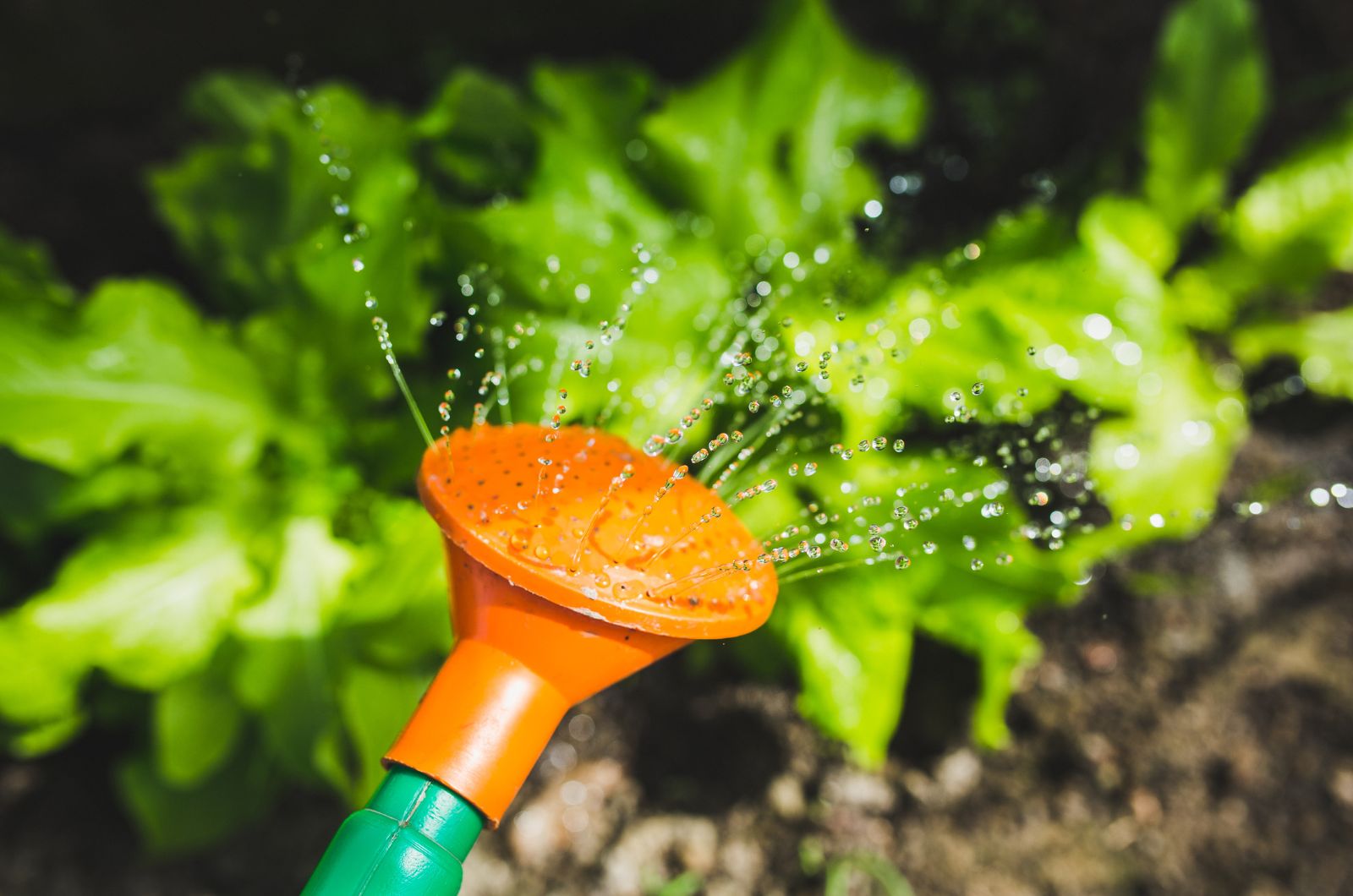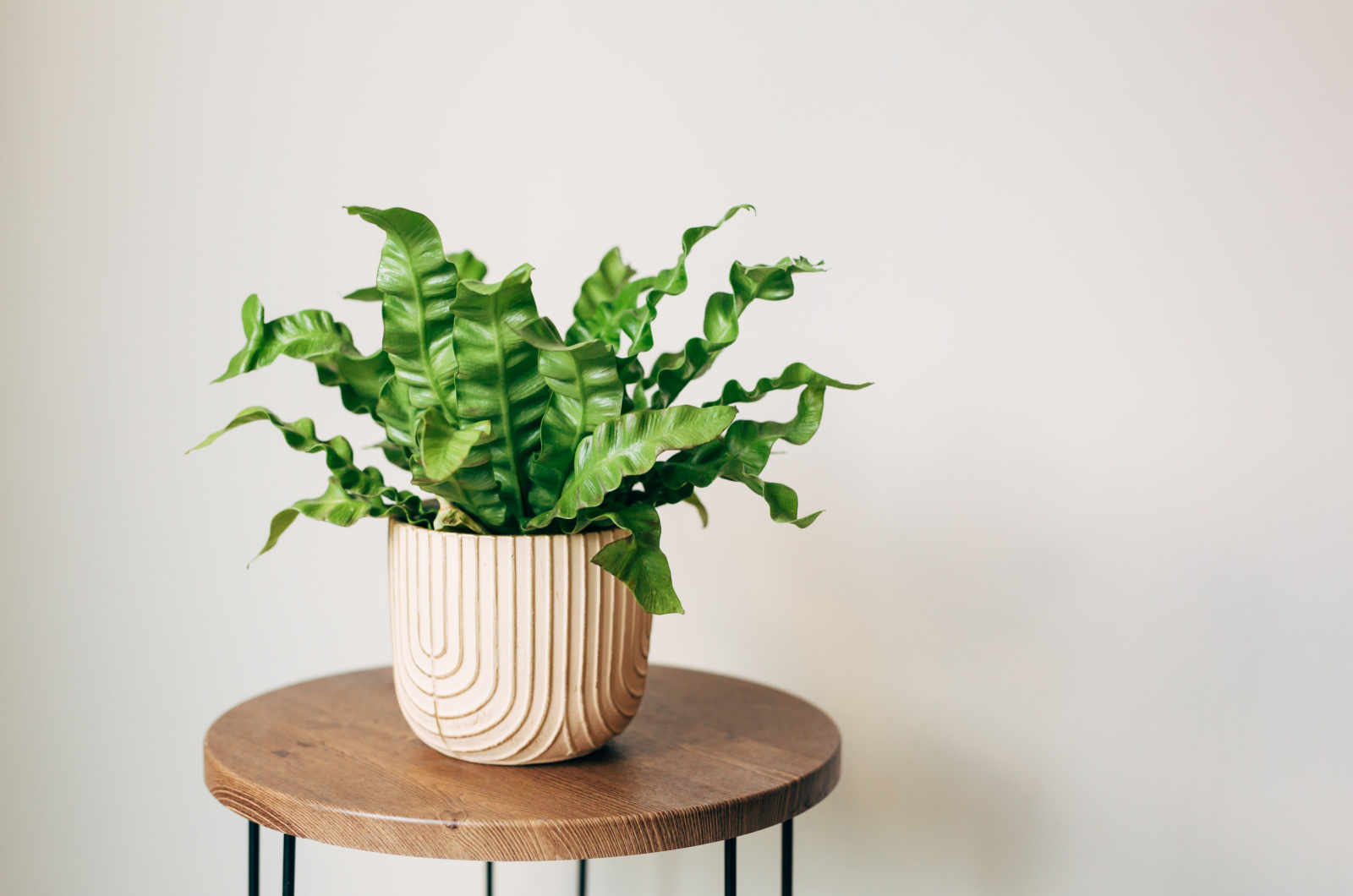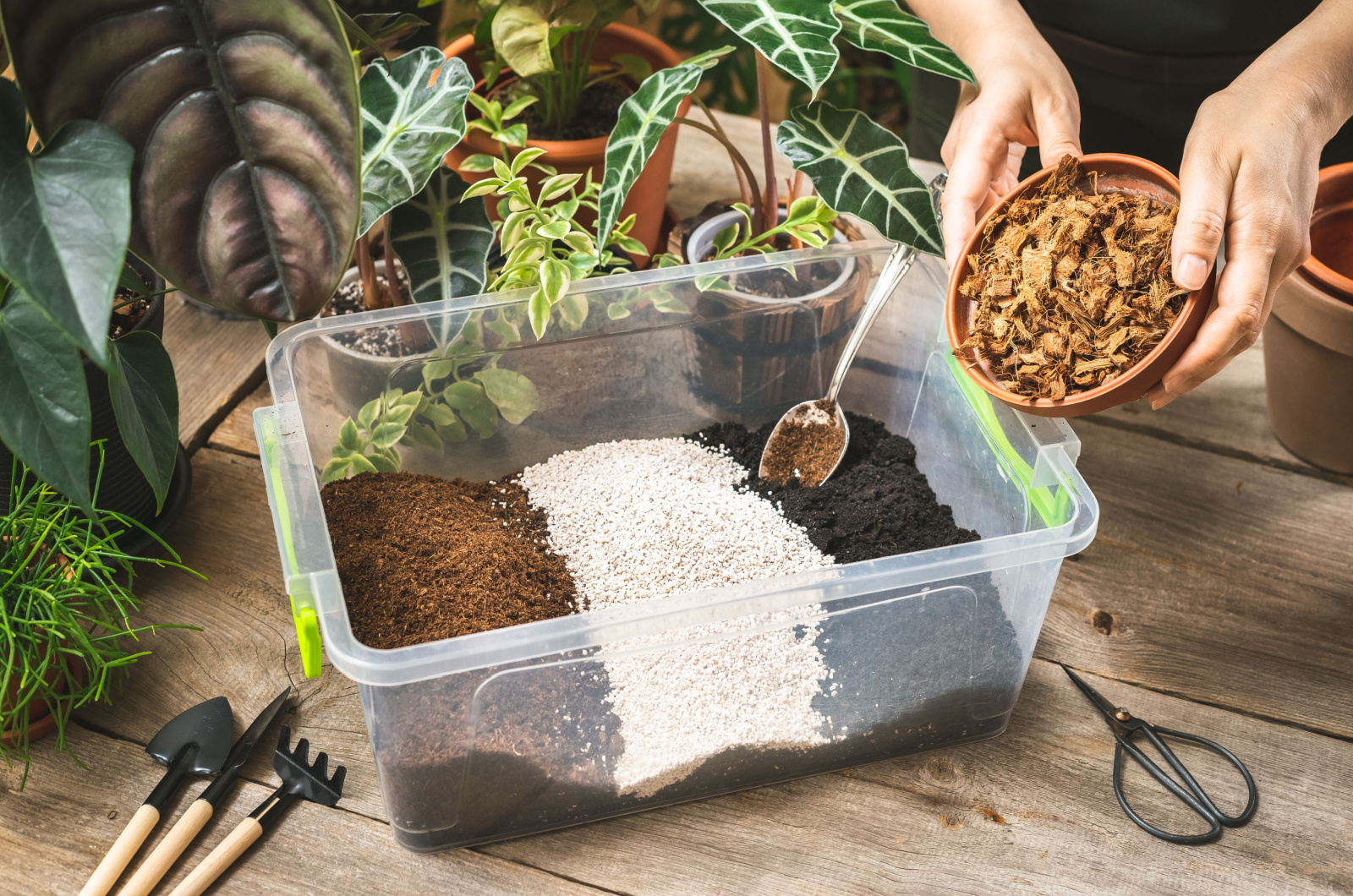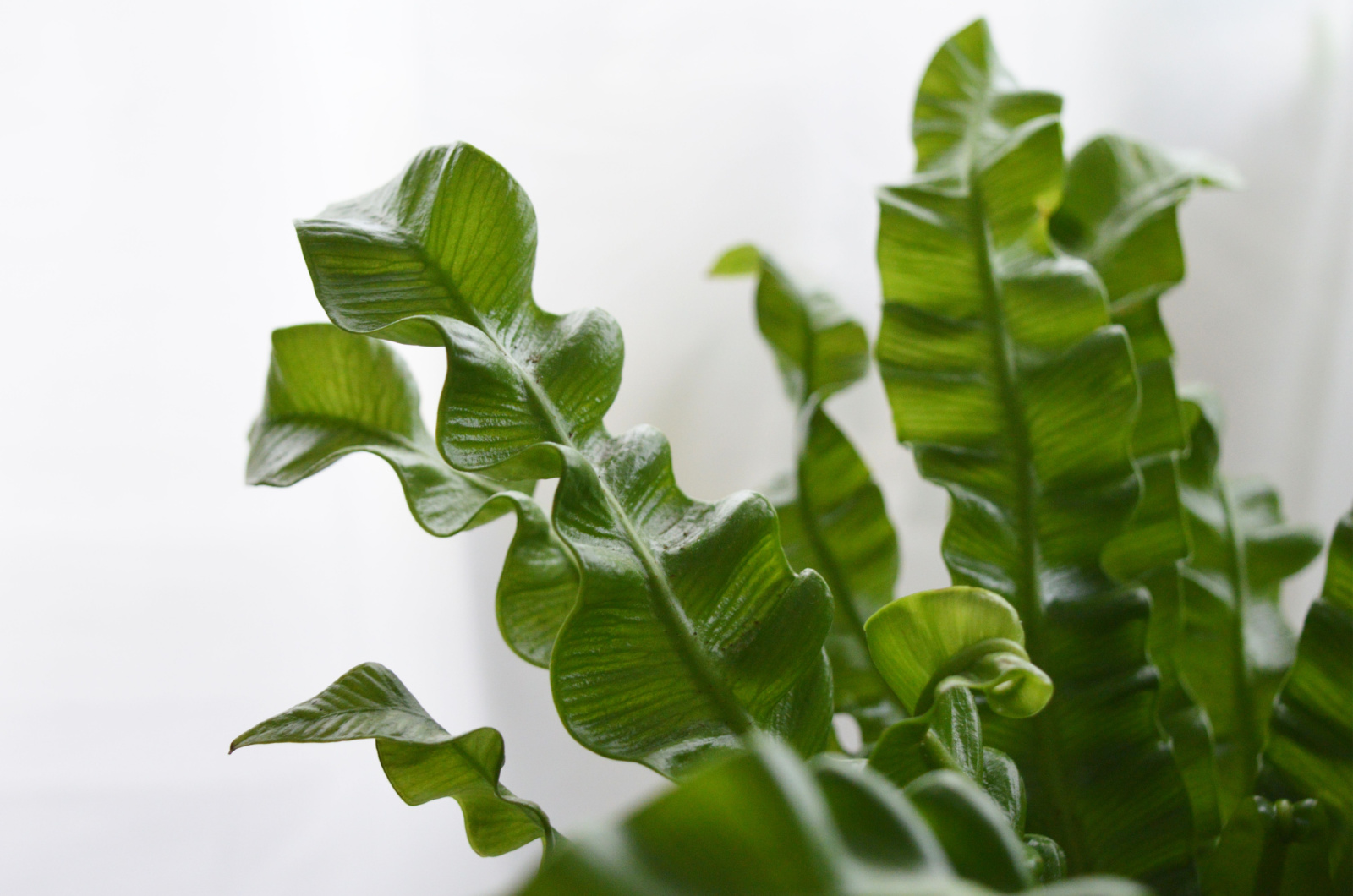Ferns bring a lot to your home decor. Whether you want a jungle or classy decoration, they’ve got you covered.
One thing I love about them is that they don’t need that much to thrive. Keep them somewhere shady and they are more than likely to look gorgeous.
The only difficult thing about them is choosing the right one!
The ‘Crispy Wave’ is one of my top choices. Lance-shaped wavy foliage looks stunning whether you place it on a plant stand in your hallway or in the bathroom.
Here are some tips that will help you care for it without having to deal with shedding and other issues all fern lovers have experienced at some point!
Let’s get started!
‘Crispy Wave’ Fern Care Guide
This fern is not needy or demanding. Aside from occasional watering, you may even forget you have one!
Here’s how easy it is to take care of it!
Lighting
In their natural habitat, bird’s nest ferns thrive in partial or full shade. The same goes for the ‘Crispy Wave’ variety.
This plant is perfect for north-facing gardens, windows, and other spots that don’t get direct sunlight.
Of course, full shade doesn’t mean complete darkness. The guide to light exposure teaches you that full shade species need around 3 hours of light per day.
If you don’t have a shady spot in your home, make sure to keep your ‘Crispy Wave’ a couple of feet away from bright windows or use sheer curtains.
Water And Humidity
Bird’s nest ferns are tropical species that thrive in moist conditions. Yet, that doesn’t mean you should drench your wavy buddy in water.
They are epiphytes in their natural habitat, but can survive as terrestrial plants if you care for them the right way.
What does this signify regarding its watering requirements?
Well, you’ll have to ensure that its growing medium is consistently moist and that humidity is on the higher end.
Irrigate your fern whenever the growing medium feels dry. You can use top or bottom watering. The latter method is more suitable if you don’t have a very loose, aerated, and light soil mix.
If you opt for bottom watering, you can fill the tray with water weekly in summer and less often in winter. Your ‘Crispy Wave’ will take what it needs and the rest will evaporate, increasing the humidity around it a bit.
You can even opt for self-watering pots if you hate this chore. This fern cultivar is the perfect candidate for it!
In case you choose regular containers and watering, make sure not to irrigate your plant at the center. The excess moisture will pool in its rosette, leading to all sorts of overwatering issues.
When irrigating your ‘Crispy Wave,’ do it in stages. Water it with a bit of moisture then come back in about 2 hours to see whether the soil absorbed it. If it did, add more (but not as much as before).
This method isn’t suitable for all your houseplants, but it works great for ferns due to their need for consistent moisture!
Humidity
This fern cultivar is a humidity hog. You need to keep it in an environment that has at least 40-60% air moisture if you want it to thrive.
That’s why they’re perfect for kitchens and bathrooms, where relative humidity is high.
Air that’s too dry will result in curly and crispy foliage (and nobody wants that!). If this happens, make sure to turn on your humidifier or mist the fronds from time to time.
Unfortunately, you will have to prune away the affected foliage because they will not regain their color.
Temperature
Since they are tropical plants by nature, ‘Crispy Wave’ ferns require a minimum temperature of 50°F to thrive.
Luckily, our homes are much warmer than this (I hope).
Make sure to avoid keeping your green buddy near AC vents, heaters, old doors and windows, and other drafty locations.
The air is drier in these spots and constant temperature fluctuations may stress out your fern.
Soil And Fertilizer
In their natural habitat, bird’s nest ferns are epiphytes that grow on palm trees. We usually don’t have these exact conditions in our homes.
The good news is that they can grow in organic matter as long as you do it right.
Make sure to choose a tropical potting mix or create your own. Make it very loose and rich in coco coir, bark, vermiculite, and pumice (or perlite). This will prevent overwatering and allow your ‘Crispy Wave’ to flourish.
Fertilizer
The good news is that you don’t have to feed this fern that often for it to flourish. You can dilute a liquid houseplant fertilizer to half-strength and apply it once a month.
Feed your ‘Crispy Wave’ from April to September, and that’s it.
P.S. You can dilute the fertilizer even more and slowly increase the concentration if you’re worried it might burn your plant!
‘Crispy Wave’ vs Bird’s Nest
There are many evergreen ferns you can add to your garden and bird’s nests are one of the most popular ones.
The classic bird’s nest fern and the ‘Crispy Wave’ are very much alike. That’s due to the fact that both of them belong to the genus Asplenium.
In fact, Asplenium nidus is the name for all bird’s nest ferns, and the ‘Crispy Wave’ is just one of the cultivars. The most popular variety of this fern species is ‘Osaka’ – the one we all think of when we hear the name bird’s nest mentioned.
The ‘Crispy Wave’ is a product and a patent of a Japanese breeding program from Yuku Islands, created by Yuki Sugimoto.
When you place it and the ‘Osaka’ cultivar side by side, you can notice some clear differences.
First of all, the ‘Crispy Wave’ is stiff and curly, while the ‘Osaka’ has soft and straight fronds. Secondly, the ‘Crispy Wave’ has fewer leaves than the ‘Osaka’. Additionally, the ‘Crispy Wave’ fern is darker than the ‘Osaka’.
Finally, the ‘Crispy Wave’ is more compact than the ‘Osaka’ cultivar. It usually doesn’t exceed a height of 8 inches and a width of 20 inches, while the ‘Osaka’ can get up to a foot tall and 16-18 inches wide.
Does The ‘Crispy Wave’ Fern Have Flowers?
This fern doesn’t have any blossoms. In fact, ferns don’t set flowers or fruits.
They multiply via spores found underneath the fronds. Yet, most ‘Crispy Wave’ houseplants will rarely produce vigorous spore structures. That makes them perfect for gardeners that suffer from allergies.
Also, it is rather difficult to multiply these ferns from spores. It even took its creator years before he succeeded.
P.S. The plant is patented and copyrighted, so you shouldn’t try to propagate it via spores in the first place!

